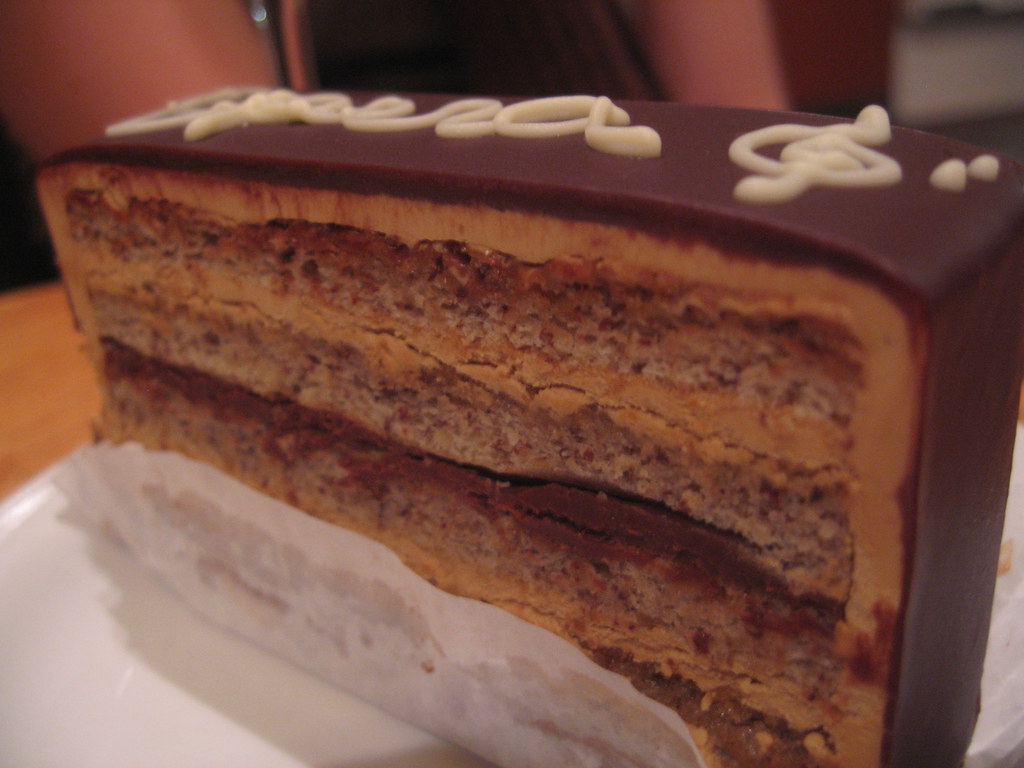Why Are We Doing This?Beckie Bray Rankin

I love to cook. Or, even more specifically, I love watching peoples’ faces when they enjoy what I’ve cooked for them. But then I squirm if they ask me for the recipe – not because I have some trade secrets to keep hidden but because I don’t usually remember exactly what I did. Sure, I was inspired by a list of ingredients from my favorite cookbooks, but the lazy side of me cut corners. Sometimes those choices work out because there is no need to sieve flour with baking powder and salt, but who makes the cheese powder into a sauce when pouring it into their mac, wasting precious time? Actually, my husband does while I dump it all in and stir. Mine is lumpy while his is smooth. Our meals would be better if I took a more methodical approach of following the recipe and noting adjustments. My method did serve me well when I cobbled together a delightful Opera Cake for some French teacher friends, so I’ll use that complicated example to parallel the complexity of unpacking unit goals into learning targets.
Unpacking the Opera Cake
If you put me in a kitchen with the Performance-Based Task, “make a beautiful and delicious opera cake”, I’m not sure I could get very far. We need to break down that cake into the various layers (almond cake, chocolate ganache, coffee mousse) and those layers into the ingredients and steps. For example, to make the joconde we gather almond flour (you could buy some or make it), butter, eggs, sugar, wheat flour, and meringue. Then we follow the directions of how to mix the first 5 ingredients together before folding in the meringue, then we put that in a parchment-lined pan and bake. Each step of the way, we can check the photo on the cooking blog to make sure that it looks the same.
Let’s make the correlation to the classroom. Ingredients (flour, dairy, sugar, eggs) are vocabulary; actions (mix, whip, bake) are language functions; tools (spatula, kitchenaid, whisk) are structures. When you add language functions and vocabulary together, you get your learning target, which is the product at the end of each step. Cooking blogs are famous for their copious photos because amateurs want to check to see if their product looks right, just like students need checks for learning to make sure they are working towards the objective. When we sequence our steps, we go from ingredient to dough to layers to cake, just like students work through the easier, concrete, simple objectives then work towards combining their skills and knowledge for their summative assessment.
Bonus Idea
Perhaps the analogy will stretch far enough to help us understand the difference between teaching grammar and language chunks. If you want to order at a pastry store in a French speaking country, you’ll use the conditional, “je voudrais”. Just like I have the choice to grind almonds into my own flour, I have the option to teach the entire conditional (grammar). Or, based on the level of the chef or student, it may be prudent to buy almond flour, or teach the single phrase (language chunk) students need for this objective.
Cakes to Cans
Before the timer goes off to take the joconde out of the oven, let’s go from theory to practice. We teased out the opera cake analogy from bottom (ingredients) to top (cake), but creating your learning target goes from summative (end results) to formative (steps along the way). Maybe you ate something you enjoyed and you are trying to break the dish down into its various parts to identify the ingredients list and steps so that you can recreate it. That’s the same process (see TELL PL4)! To unpack your unit goal into learning targets, think through the skills and content students will need to accomplish the goal, from first to last or simple to complex. The next step is to write out your learning targets so students can understand them (TELL LE2). The formula is:

We know that students learn best when they know what is going on. So having a nebulous idea of what content and skills students will need to do well on the summative assessment is just like taking what’s in your cupboard and fridge at the end of the week to throw together though your goal was to copy a delightful meal you enjoyed. For students to self-advocate, self-reflect, and self-motivate to learn, it’s so important to post the learning target during the entire learning episode (TELL EN4), review it before beginning, review it at the check for learning, and circle back at the end of the learning episode to see how students have grown towards the target (TELL LE2). I tell myself this is similar to me looking back at the recipe four times to make sure how much flour or if it’s baking soda or powder, but that just may be my sieve of a brain! In cooking, tasting the batter has been a treat, but this is essential to knowing you are on the right track. Don’t skimp on checks for learning along the way to dipstick where students are in their progress (TELL PL4, PL3).
Elaborate pastries may not be your thing, but breaking down a unit goal into learning targets is the only way to get students towards the goal. Just like I note when folks love what I’ve cooked, allow students the time to savor and reflect on what they’ve learned as they move forward on their path to proficiency (TELL PL5).
 Beckie is a French teacher at Lexington High School (MA) and was selected as the 2022 PEARLL Educator in Residence.
Beckie is a French teacher at Lexington High School (MA) and was selected as the 2022 PEARLL Educator in Residence.

